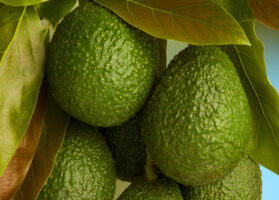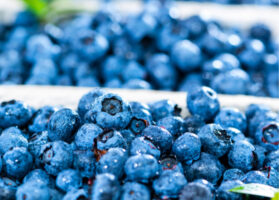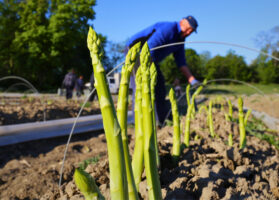Agronometrics in Charts: Late Start to the Mexican Grape Season Pushes Pricing to an All Time High
In this installment of the ‘Agronometrics In Charts’ series, Sarah Ilyas studies the state of the Mexican grape season. Each week the series looks at a different horticultural commodity, focusing on a specific origin or topic visualizing the market factors that are driving change.
With a production in 2022 of more than 308 tons of table grapes, which generated a value of 0.53 billion for producers, Sonora is the leading producer of this fruit in Mexico. Principal grape varieties produced in Sonora in order of importance are Superior Seedless or Sugraone, Flame, Perlette, and Red Globe. According to the numbers from the Office of Agricultural, Fisheries and Aquaculture Information of the State of Sonora (Oiapes) of the Secretary of Sonora Agriculture, the main producing areas of table grapes are Hermosillo in first place, followed by Caborca, Guaymas, Cajeme, San Luis Rio Colorado and Ures. For this 2023 cycle, there is a cultivated area of 16,881 hectares.
During a recent meeting, the Association of Table Grape Growers of Sonora (AALPUM) in Mexico projected a total of 21.7 million boxes for the upcoming 2023 season, with slightly over half comprising green grapes. This forecast represents a 1.3 percent increase compared to last year’s production of 21.4 million boxes. Producers have observed a significant decline in red globe varieties, which have been losing popularity for some time now. Additionally, the reduced supply of summer fruits in the United States, caused by extended adverse weather conditions in California, may contribute to increased demand for Mexican grapes this season.

Source: USDA Market News via Agronometrics.
(Agronometrics users can view this chart with live updates here)
“The start of the Mexican grape season has never been so late,” says Miky Suarez of MAS Melons & Grapes. The weather conditions play a major role in the late start of the season. “New varieties naturally start later,” Suarez said. “They are at least two weeks later than traditional varieties like Perlette and Flame, which are gradually disappearing and being replaced by new varieties.” The delayed start of the harvest can give rise to complications towards the end of the season. In a typical season, the harvest concludes within the first or second week of July, with minimal fruit movement occurring during that month. However, in the current season, it is anticipated that the harvest will persist until mid-July, consequently heightening the probability of encountering rain.
The industry’s original estimate was a total quantity of 21.7 million cartons. “Although this number may be slightly lower, there will be enough fruit available until the second week of July.” In an average year, the late end of the Mexican season would lead to an overlap with the California harvest. “However, California is also starting late this year, which is a good thing. That gives us time to move Mexican volume before California kicks in,” says Suarez.

Source: USDA Market News via Agronometrics.
(Agronometrics users can view this chart with live updates here)

Source: USDA Market News via Agronometrics.
(Agronometrics users can view this chart with live updates here)
A late start to the season led to deficits in the markets, which caused prices to skyrocket. Prices reached a record high this season in week 21, at $48.70 per package. Prices fell as Mexican grapes trudged their way into the US market. While current pricing is lower than that recorded in week 21, it is still trending higher than average. Week 24 saw pricing at $28.32 per package, 57 % higher in comparison to week 24 of 2022.

Source: USDA Market News via Agronometrics.
(Agronometrics users can view this chart with live updates here)

Source: USDA Market News via Agronometrics.
(Agronometrics users can view this chart with live updates here)
According to the USDA GAIN report, Mexican farmers continue to grapple with elevated input costs for grape production and are contemplating the cultivation of more lucrative horticultural crops. While grapes remain a primary focus for many growers, diversification into alternative vegetable and fruit crops, including tomatoes, peppers, squash, asparagus, and watermelon, is already prevalent. Additionally, some farmers are exploring new possibilities for the region, such as pomegranates. Economic constraints hinder farmers from conducting comprehensive research and testing trials to ascertain the profitability and disease resistance of new grape varieties. Attracting a stable labor force for table grape production and harvesting in Sonora is also cited by major growers as a continual challenge.
In our ‘In Charts’ series, we work to tell some of the stories that are moving the industry. Feel free to take a look at the other articles by clicking here.
All pricing for domestic US produce represents the spot market at Shipping Point (i.e. packing house/climate controlled warehouse, etc.). For imported fruit, the pricing data represents the spot market at Port of Entry.
You can keep track of the markets daily through Agronometrics, a data visualization tool built to help the industry make sense of the huge amounts of data that professionals need to access to make informed decisions. If you found the information and the charts from this article useful, feel free to visit us at www.agronometrics.com where you can easily access these same graphs, or explore the other 21 commodities we currently track.
Written by: Sarah Ilyas






